THE AFRICA COLLECTION at the Penn Museum includes objects that were purchased by or gifted to the Museum or collected on ethnographic expeditions, primarily in the late 19th and early 20th centuries. As was common practice at the time, most pieces were acquired by wealthy travelers or European art and antiquities dealers and later sold to institutions around the world. One of the goals in creating our new Africa Galleries was to place the objects in our care in context. Why, where, and how was each object made? How was it used in daily life, on special occasions, or in religious ceremonies? What made this object meaningful to the culture that produced it? Were other objects displayed with it? This is the type of information that we provide when it is known. It was not easy to select just 15 of the 300 or so objects that are on display in the new Galleries, as there are many stories to tell. We hope this small selection encourages you to visit the Museum to learn more about these wonderful objects and their histories.

Unidentified Edo Artist
Igun Eronmwon (Brass Casting Guild) Copper Alloy
16th century CE
Nigeria, Edo, Benin City
Height 47 cm, PM object AF2066
This commemorative plaque once adorned a wooden post at the Benin Royal Palace. The military leader (center) holds an eben (ceremonial sword) used in a festival to honor Ogun, the god of iron and war.
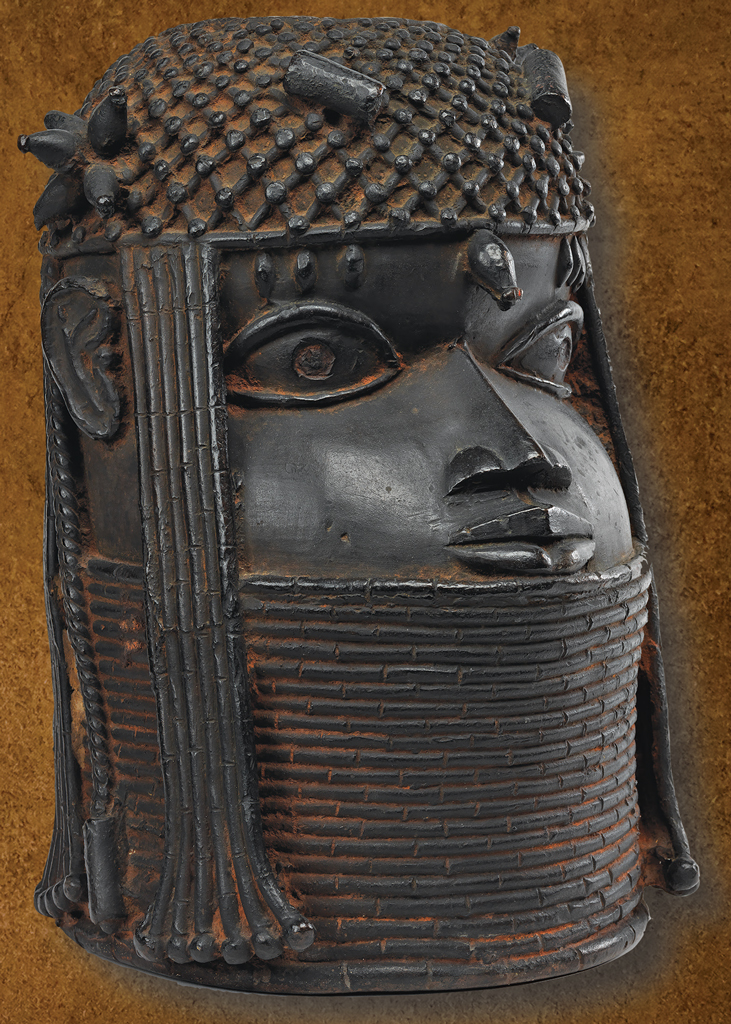
Unidentified Edo Artist
Igun Eronmwon (Brass Casting Guild)
Copper Alloy
17th century CE
Nigeria, Edo, Benin City
Height 30 cm, PM object AF2060A
This brass head represents a previous Oba or hereditary ruler. The reddish color of the metal connects him to Ogun, the god of iron and war. A carved elephant tusk would have sat atop the head to demonstrate the Oba’s absolute control over the Kingdom.
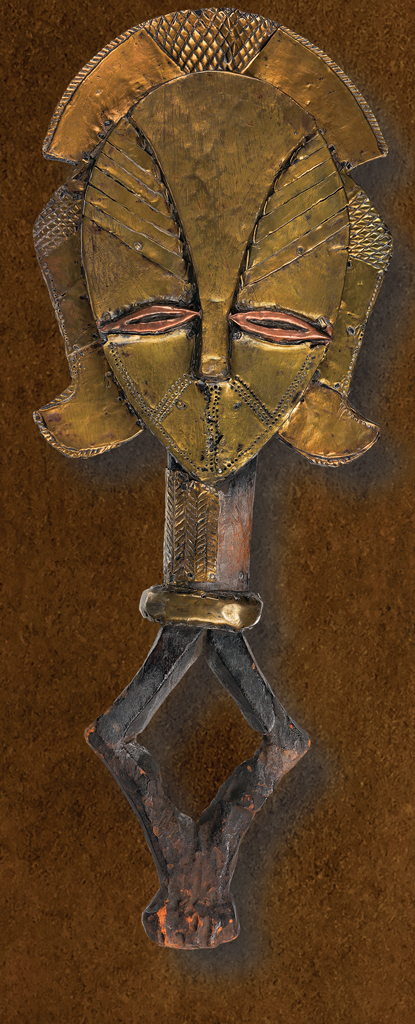
Unidentified Kota Artist
Wood, Copper, Brass
Late 19th–Early 20th century CE Gabon
Height 47.7 cm, PM object 29-12-201
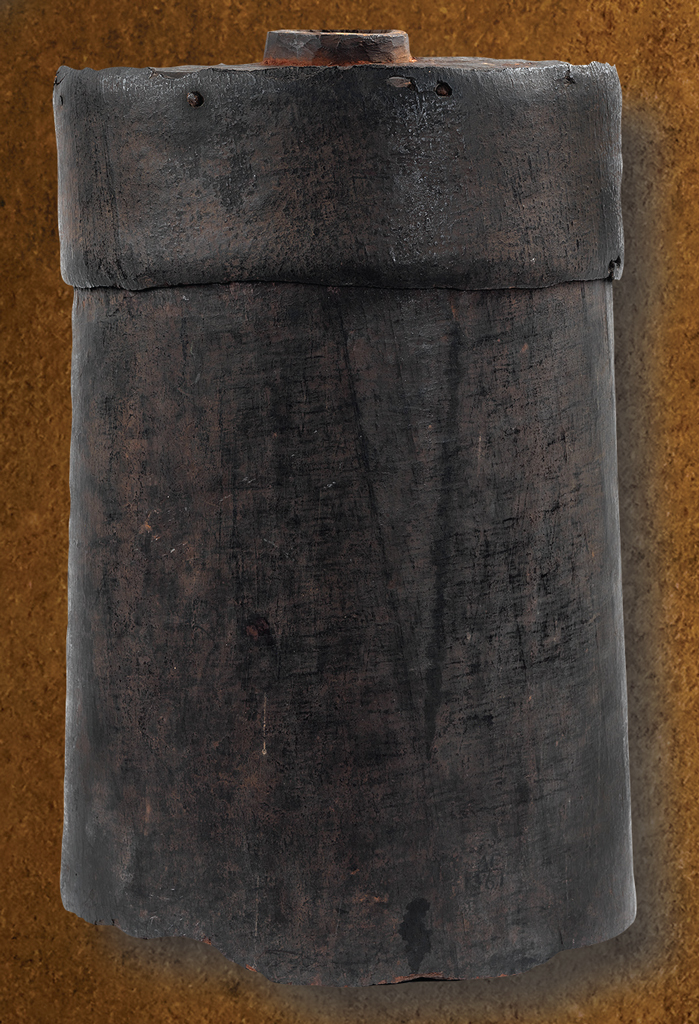
Unidentified Kuba or Luba Artist
Wood, Fiber
Late 19th century CE
Democratic Republic of the Congo, Kasai Province
Height approx. 42 cm, PM objects AF1361A / AF1361B
Many Central African peoples believe the bones of their ancestors retain power after death. Bwete (reliquary baskets) like this once held human remains, though this basket no longer does. Mbulu ngulu (guardian figures) were tied to the tops of the baskets to watch over the sacred remains.

Unidentified Edo Artist
Igbesanmwan (Ivory Guild) Ivory
Late 18th–Early 19th century CE Nigeria, Edo, Benin City
Height 37.8 cm, PM object 29-93-1
Unmarried women served the Iyoba (Queen Mother) at her Palace outside Benin City. This figure, which represents these attendants, was once part of a pair that lived on an altar dedicated to the Iyoba. Blade-like tattoos across the stomach and coral beads around the neck of the figure signal her non-royal status.
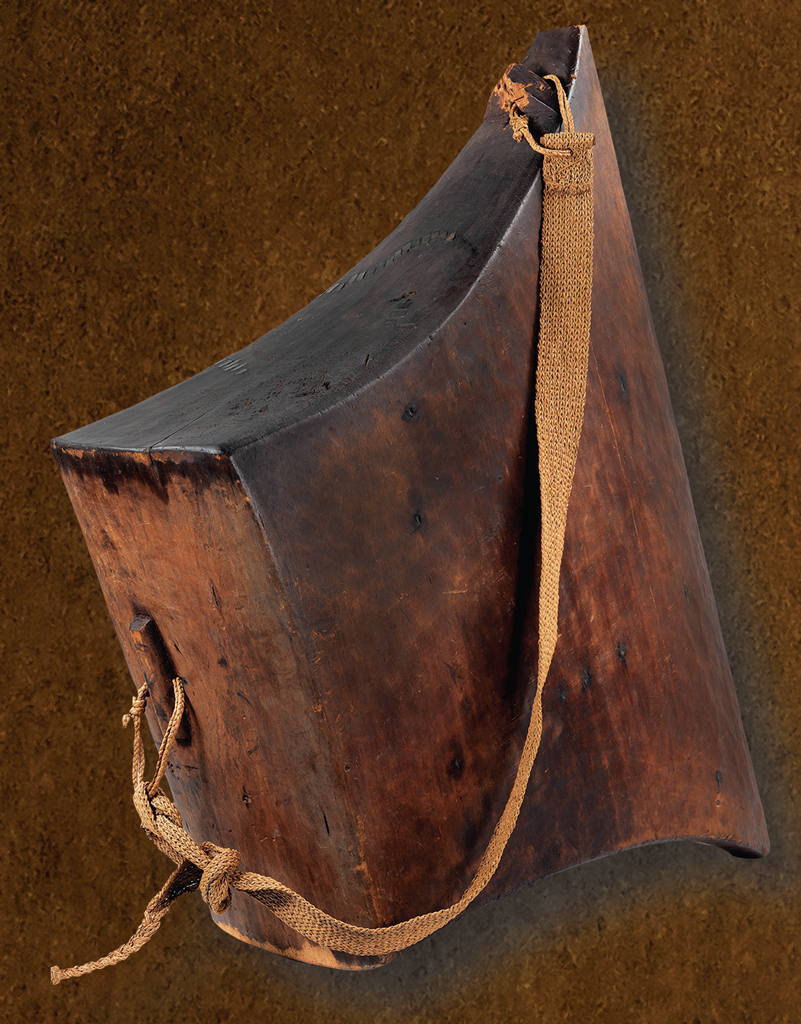
Unidentified Tetela Artist
Wood, Fiber
Democratic Republic of the Congo, Kasai Province
19th century CE
Length 83 cm, PM object 60-9-1A
The six musical tones played on lukumbi (slit drums) mimic the sound of Tetela speech. Tetela men in Central Africa learn to combine these tones to communicate messages about warfare and ceremonies, and to make music for dancing. In the evening, the sound of this drum carries for ten miles.

Ato Ayele Beshah
Copper, Zinc, Nickel
May 1, 1969 CE
Ethiopia, Addis Ababa, Gullele, Zebegna Sefer
Height 8.5 cm, PM object 88-7-16
The Orthodox Christian Church in Ethiopia is one of the oldest in the world. This metal cross is unfinished, but crosses like it have attachments that allow them to be held by priests during blessings or worn around the neck for protection.
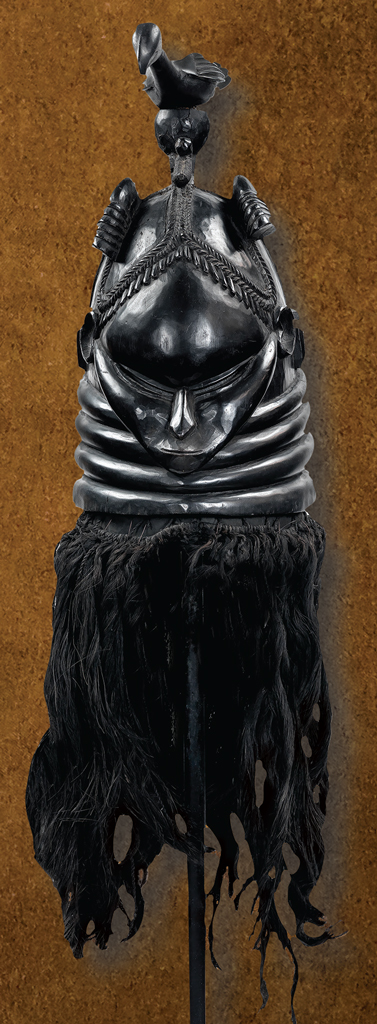
Unidentified Yoruba Artist
Ivory
19th century CE
Nigeria, Owo Kingdom
Height 18.5 cm, PM object 29-94-2
Delicately carved ivory pieces signified power in many West African kingdoms. This container may have been used to store salt in the Oba’s (King’s) Palace in Owo or to hold palm nuts in divination ceremonies.
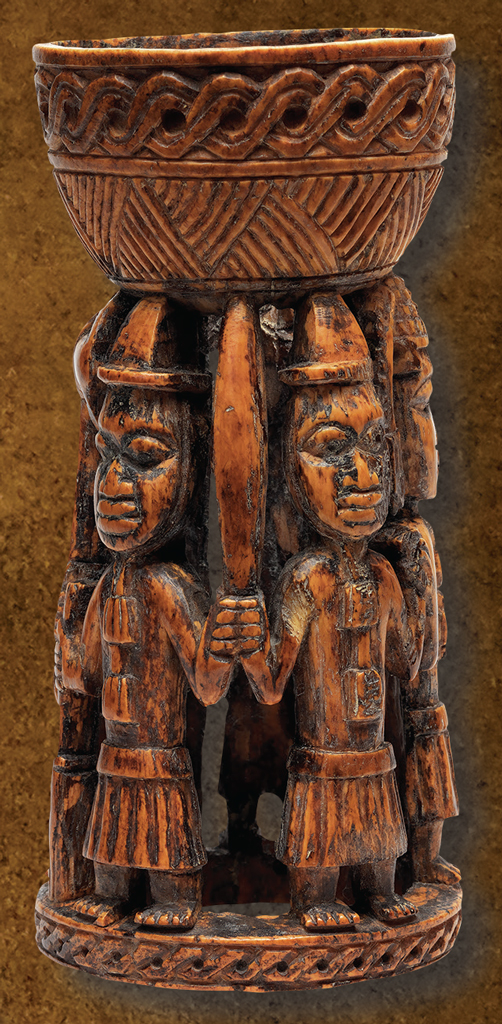
Helmet Unidentified Mende Artist
Wood, Fiber
Early 20th century CE
Sierra Leone, Sherbro Island,
Sitia Chiefdom, Yoni
Height 43 cm, PM objects 37-22-267A / 37-22-267B
Sowei helmets are worn exclusively by women of the secret Sande Society. The Society teaches girls in Sierra Leone and western Liberia about marriage, childcare, economics, and medicine. Masked dancers perform for the community during initiation ceremonies
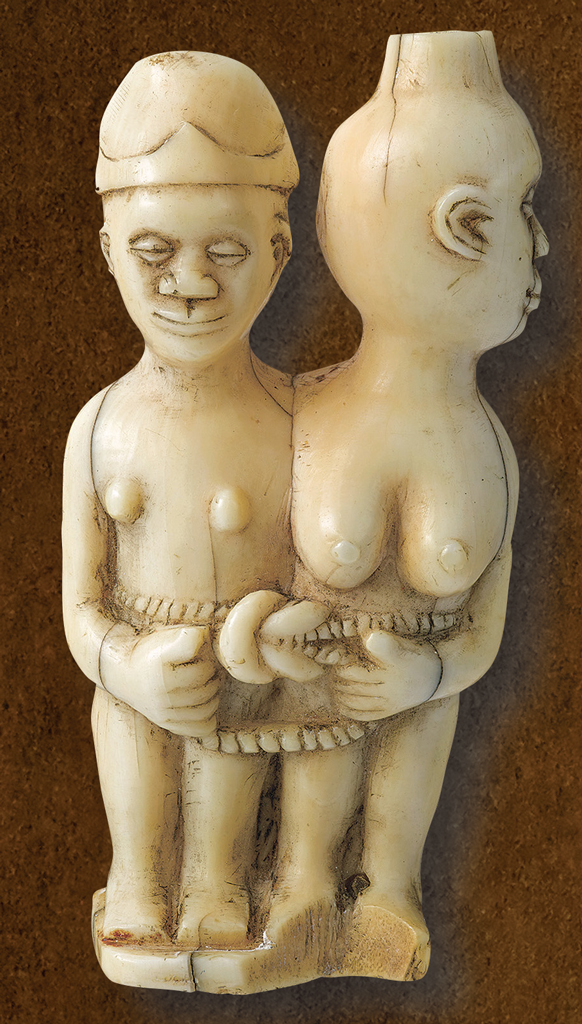
Unidentified Kongo Artist
Ivory
ca. 1880–1925 CE
Republic of the Congo
Height 6.6 cm, PM object 29-94-6
The rope encircling the waists of this couple protects them throughout their life together. The knot represents the strength of their union. The artist carved this object after stripping the outer rind from an elephant’s tusk and sawing it into small segments.
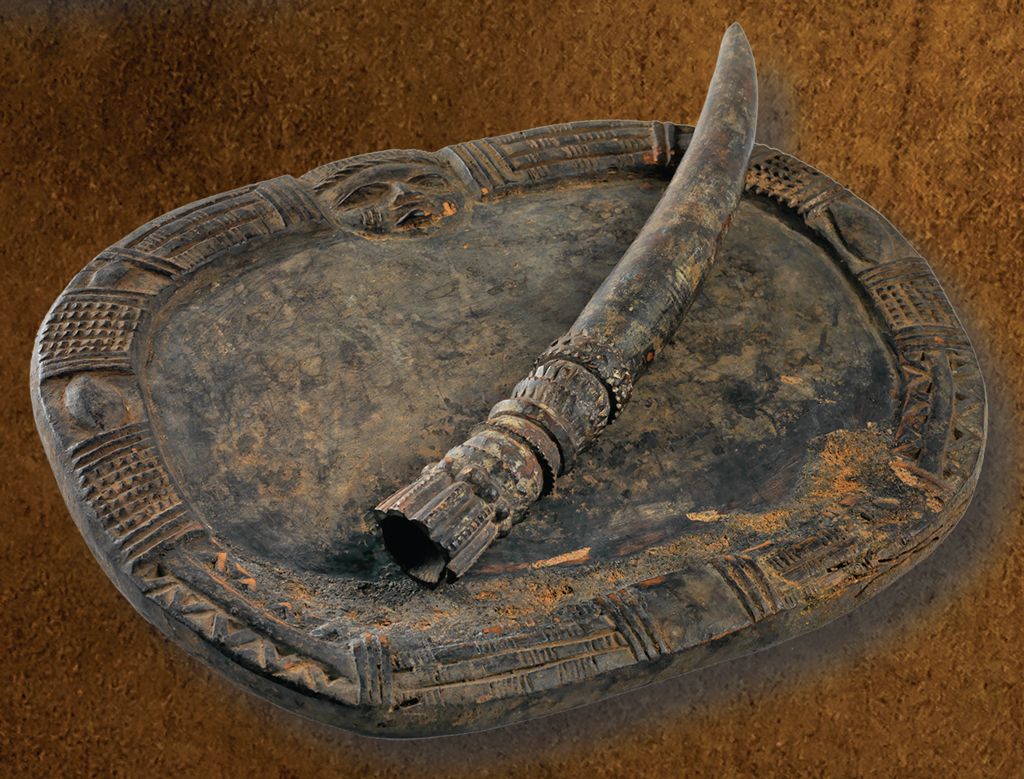
Iroke Ifá (Divination Tapper)
Unidentified Yoruba Artist
Wood, Horn
19th–20th century CE
Nigeria
Tray length 29.2 cm, PM object 81-2-7A / 81-2-7B
Yoruba oracles use opon Ifá (divination trays) to divine answers about the future. By tapping on them with iroke Ifá (divination tappers), diviners call forth the messenger god, Eshu, shown at the top of this tray. Palm nuts thrown on the bowl-like surface of the tray help diviners answer questions.
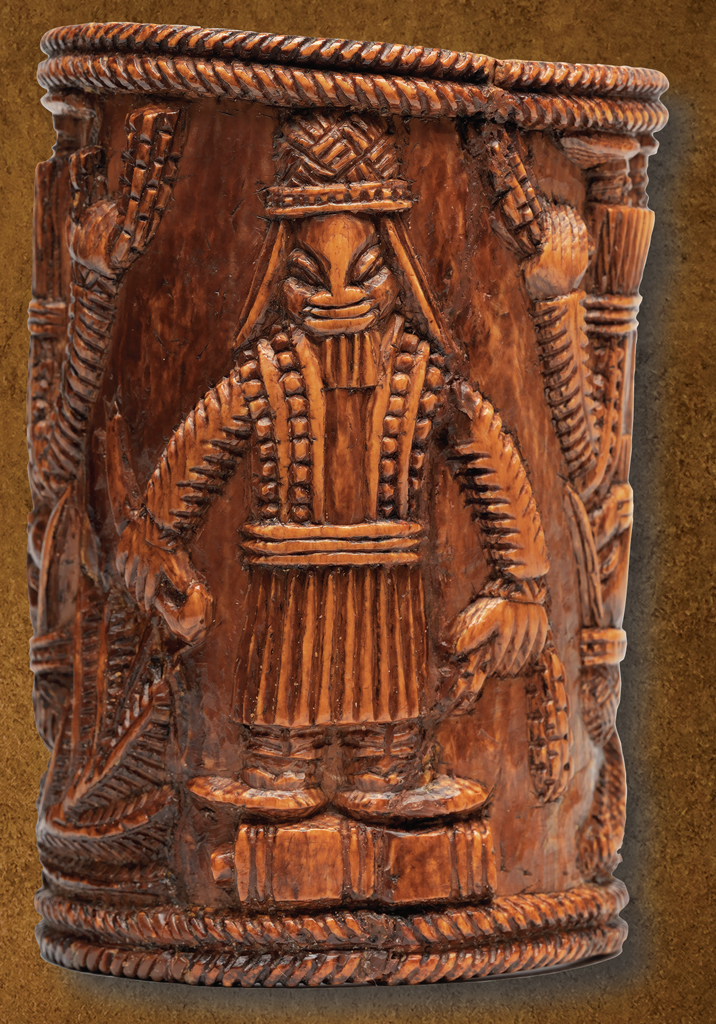
Unidentified Edo Artist
Igbesanmwan (Ivory Guild)
Ivory
18th century CE
Nigeria, Edo, Benin City
Height 12 cm, PM object 21168
High-ranking officials in the Benin court often decorate their wrists with brass and ivory armlets. The solid cuff would not snag on other beaded jewelry as the owner tossed an eben (ceremonial sword) during celebrations.
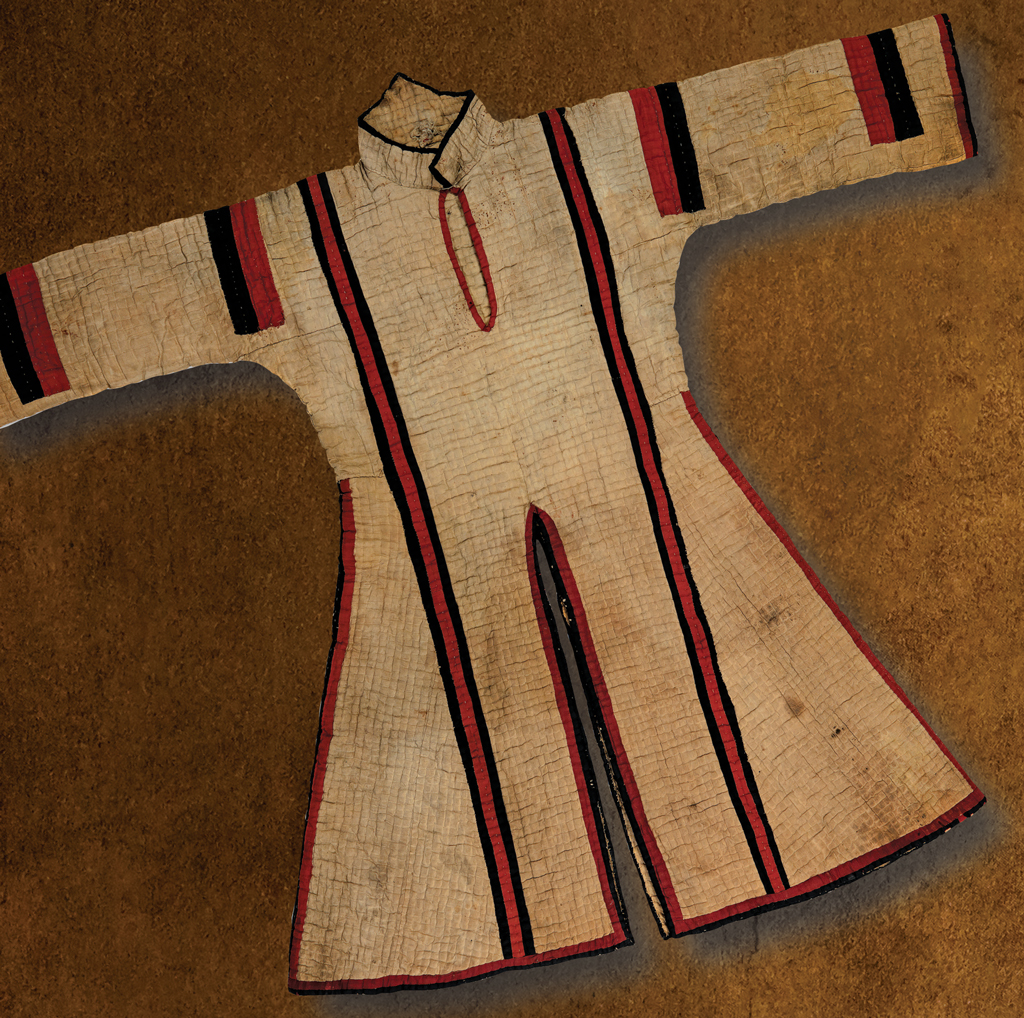
Unidentified Sudanese Artist
Cotton
Late 19th century CE
Sudan
Length 106 cm, PM object AF3357
In 1881, Muhammad Ahmad was proclaimed Mahdi (Redeemer) of the Islamic faith. He united Sudanese people against British and Turco- Egyptian colonizers and established an Islamic state that lasted 18 years. This jacket was worn by soldiers in the Mahdist army. It is exhibited with a cap, shield, kaskara (sword), and sheath.
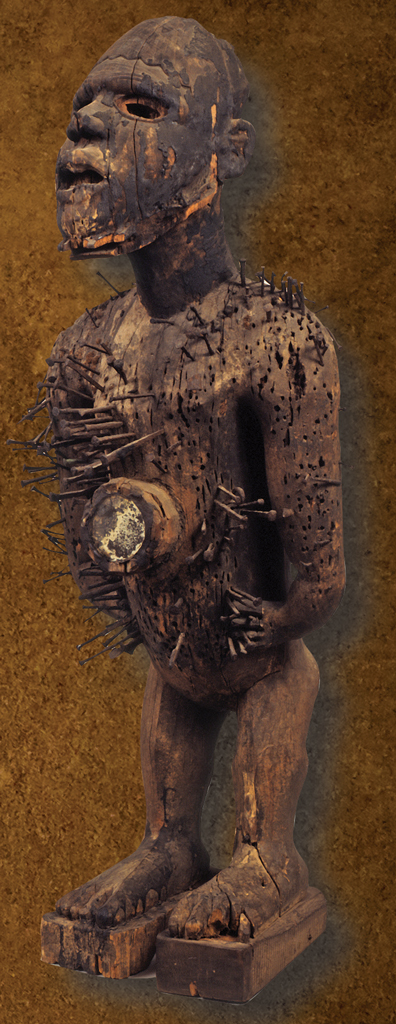
Unidentified Vili Artist
Wood, Glass, Brass, Iron
Late 19th–Early 20th century CE
Angola, Cabinda, Chiloango River Region
Height 104.5 cm, PM object 30-46-2
Nkisi maintain public order. Kongo religious practitioners place bilongo (medicine) inside the wooden figures to attract spirits. Driving a nail into the figure activates it, calling on the spirit within for protection, judgment, or enlightenment. This nkisi may once have served a large community in what is now Angola. Here in the Museum, its spiritual function is no longer active.
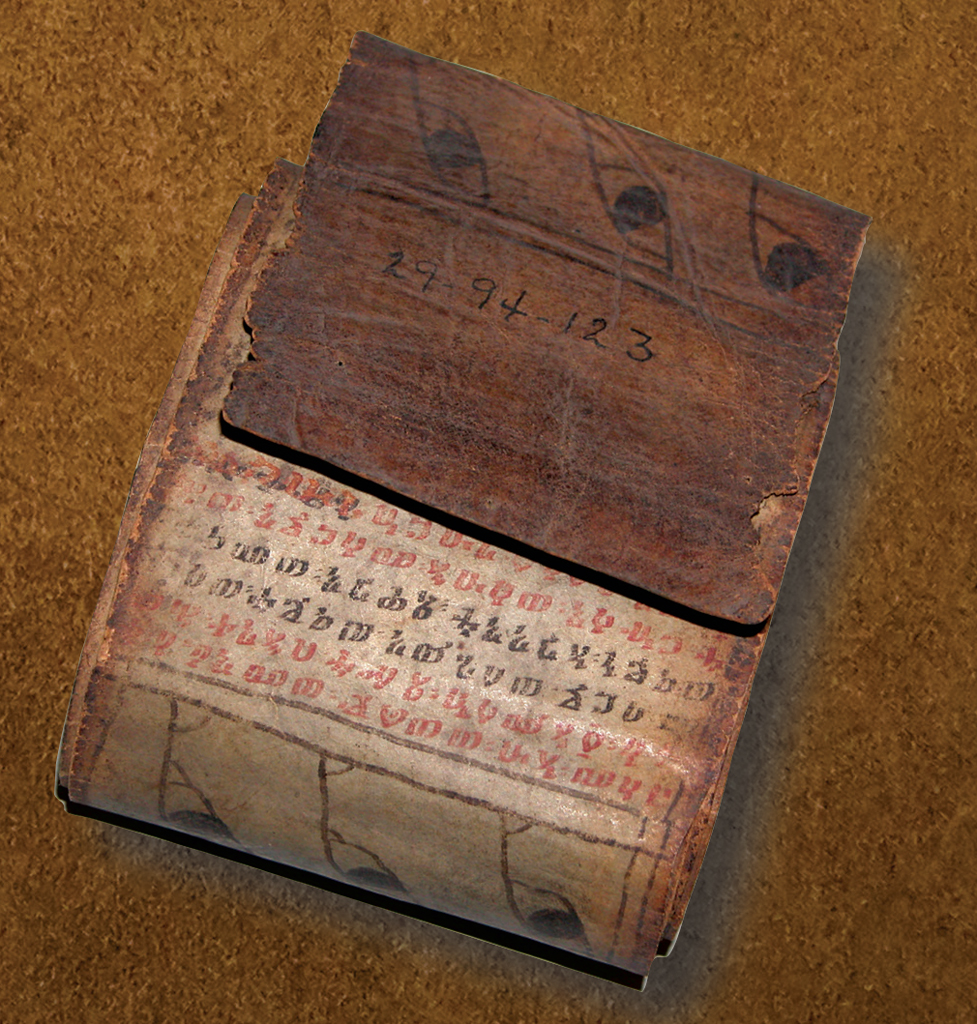
Unidentified Ethiopian Artist
Parchment, Ink
ca. 1900 CE
Ethiopia
Length 167 cm, PM object 29-94-123
Many Ethiopian Christians believe that people encounter evil every day. Some wear a kitab (amulet scroll) in a leather pouch around their necks for protection. This scroll contains the Lord’s Prayer written in the ancient liturgical language Ge’ez.
